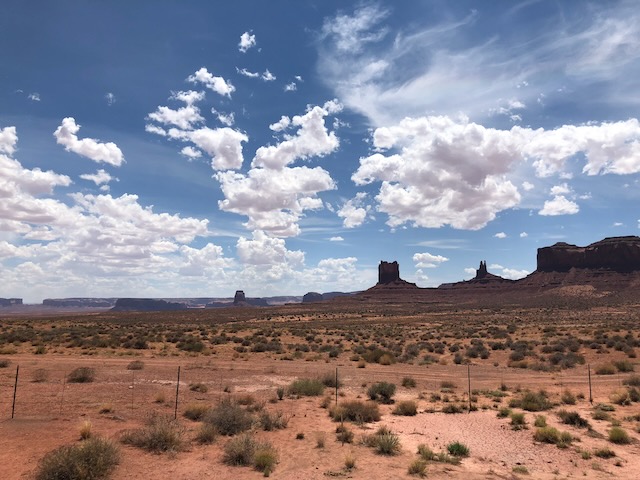
A dry place. Photo by John Fleck
Winters rights are no match for the current dysfunction of Colorado River Basin governance.
Shannon Mullane at the Colorado Sun has been on this, and last week had some useful details:
Advocates of a deal to secure reliable water for thousands of tribal members in Arizona raced to win Congressional approval until the final hours of the session in December.
They didn’t make it.
“We just ran out of time to address all the issues,” said Tom Buschatzke, director of the Arizona Department of Water Resources and principal negotiator for the state on Colorado River matters.
Part of the catch is the cost. This is a really expensive settlement, though it’s reasonable to point out all the other expensive water projects built over the last century with massive taxpayer subsidy to provide water to non-Indian communities. But, as Mullane (thanks, Shannon!) reported back in December, one of the main hitches is the way the deal is entangled in broader Colorado River Basin uncertainties about who can move what water where:
State officials have asked for clarity on how water will move across state lines. And Colorado River officials in Colorado, New Mexico, Utah and Wyoming have concerns about how the settlement would allow water from their basin to be used farther downstream.
Finger-pointing for the failure to work out an agreement is appropriate, but ultimately doesn’t matter. The bottom line here is that the failure of the Colorado River governance community as a whole to work out these details means some of the most water-poor communities in the nation continue to not have water, while the people blocking the agreement do have water.
Let me say that twice, for emphasis: Communities that do have water are blocking access to water for their neighbors who don’t have water.
That’s not OK.
A functional Colorado River governance community would have been able to solve this. Its failure, rooted in parochial attempts by communities to protect their own water supply, is a concrete demonstration of how hollow talk about Tribal inclusion really is.
Do better.

100% agree. Do better times 1,000.
A note on my blog’s comment policy: I believe in the importance of broad discourse. But it’s my blog. I’ll delete whatever I want. My rough criteria, which I’ve just now developed because I’ve never felt the need to do this before, is if something’s a) idiotic, and b) offensive, I’ll delete it.
As your photo shows, the Navajo Nation is spread out, rural, and not all the folks live in what few small communities that exist. I can see pumping water to those communities but how do you deliver water to those many that live far from town? Not disputing their water right but how do you move the water?
Bert: The legislation very briefly outlines several construction/pipeline projects designed by the tribes to meet their need, including the iiná bá – paa tuwaqat’si pipeline. http://www.congress.gov/bill/118th-congress/house-bill/8940/text#toc-HAA419DD44C9E4BA28BDB7ED8C1CCA807
And as my reading of that legislation, this blogpost, and the linked stories constitute 100% of my knowledge on the topic, is it wrong for me to think the various State Water Folks (SWF) couldn’t have agreed to figure out the accounting details LATER and get water to these people ASAP? In comparison, the SWF sure as hell haven’t figured out the details for a new agreement on Colorado River water BUT also sure as hell haven’t discountinued access to current water users while they’re go about (slowly, very slowly) the process of figuring that out.
The federal govt and several states have proven to be remarkably adept at moving much larger amounts of water over similar distances. It just takes 1) need, 2) desire to accomplish and 3) money. 2 and 3 have been lacking for far too long in the case of Navajo/Hopi. This is the best attempt so far to correct that.